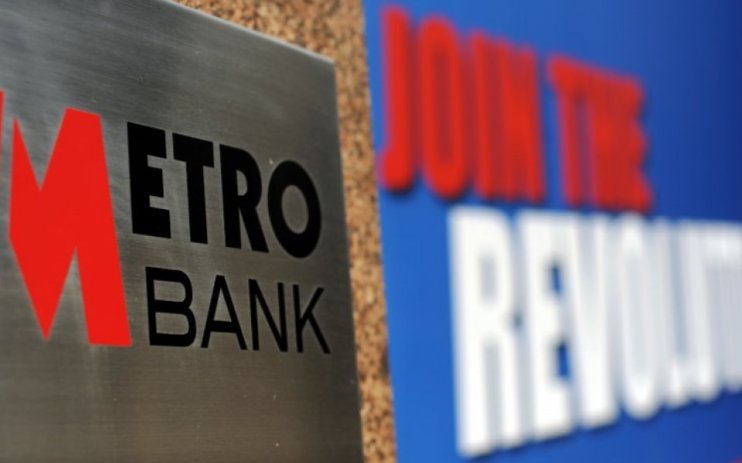Metro Bank has learned ‘the hard way’ about costly branches, analysts say

Following its £925m rescue deal, today Metro Bank announced it would overhaul its business model to slash costs.
The lender has said it wants to cut staff numbers by 20 per cent and reduce branch opening hours to deliver up to £50m in savings per year.
However, the bank has reiterated its commitment to in-person banking. It has said it wants to open 11 new “stores” in the north of England by 2025.
But analysts have warned this commitment to branches, which are costly and run against the prevailing shift to online banking, could hold back Metro Bank’s transformation.
So, what does this all mean for the troubled high street lender and its 2.7 million customers?
High street reputation
Metro Bank was the UK’s first new high street bank in more than a century when it was founded in 2010 by American Vernon Hill and Brit Anthony Thomson.
The bank was created to challenge the dominance of the nation’s traditional Big Four lenders – HSBC, Natwest, Lloyds and Barclays.
A key part of the strategy was to build a vast network of physical branches as other lenders pulled back from the high street.
Metro Bank’s branches were known for being pet-friendly and open seven days a week. It currently has nearly 80 branches in England and Wales – a far cry from the 200 branches by 2020 that it planned in 2013.
“It was a strategy that grabbed headlines and pulled people through the doors – the only problem was that it was a strategy with a huge price tag,” said Danni Hewson, head of financial analysis at AJ Bell.
“Traditional high street rivals continued to close branches because they realised they could shave costs back and provide most services to most people online. Metro has had to find out the hard way that a good strategy must also be a profitable one, and today’s cost-cutting is an admission that it needs to find a middle ground.”
Metro Bank co-founder Anthony Thomson echoed a similar sentiment to City A.M. last month, saying he left the firm after the board rejected his arguments against the branch strategy.
A spokesperson for the bank told City A.M. today that it remains “committed to stores and the high street” and the firm is “not closing any stores.”
What went wrong?
After some initial success, Metro Bank hit stormy waters in 2019. The bank revealed it did not have enough capital to meet regulatory requirements after accounting errors. After this scandal, Hill subsequently left the firm.
The bank was fined £5.4m by the Prudential Regulation Authority in December 2021 and £10m by the Financial Conduct Authority last December over the accounting fiasco.
Despite this turbulence, it looked like the group was back on track earlier this year. Metro Bank swung to a pretax profit of £15.4m in the first half of 2023, recovering from a period of major restructuring and write-off costs.
However, struggling with low capital, the bank asked permission from the Bank of England to use its own models to assess risks on its mortgages and assets in September. The central bank said approval would not be granted in 2023.
As a result, Metro Bank tried to shore up its balance sheet through a major refinancing package, helped by the sale of some of its mortgages.
The refinancing package, announced in October, includes a £325m capital raise led by existing shareholder Spaldy Investments, of which £150m is new equity, alongside £600m of debt refinancing.
Spaldy Investments is led by Colombian billionaire Jaime Gilinski Bacal, who is known for turning around embattled banks. He has become Metro Bank’s controlling shareholder with a stake of around 53 per cent.
More than 90 per cent of shareholders backed the package, which a company spokesperson said was a “testament to their belief and confidence in the future of Metro Bank.”
As well as this capital raising, Metro Bank is in the process of offloading part of its residential mortgage book. It has been reported Barclays is in exclusive talks to buy the £3bn book of business.
Will today’s news reassure investors?
Now Metro Bank has said it will overhaul its cost structure, the bank seems to have admitted raising new capital alone was not enough to stabilise the business.
“Metro Bank is certainly taking steps in the right direction, but whether these will be enough to make a meaningful impact on sentiment remains to be seen,” Matt Britzman, equity analyst at Hargreaves Lansdown, told City A.M.
Britzman also noted the bank is exposed to deposit shifts and the potential for interest rates to fall next year.
“These are sector-wide challenges, but the lack of any real structural hedge at Metro means it’ll miss out on an income tailwind that its peers will be reaping over the next few years,” he said.
“There’s certainly an argument that things are so downtrodden that the only way is up, but this could well be a case of trying to catch a falling knife.”
“Investors will be relieved to see the bank intends to make the most of its second chance, but they will want to see that the change in strategy doesn’t result in a loss of customers,” Hewson said.
“They’ll also want clear evidence that the reported fire sale of some of its mortgage books won’t undermine turnaround plans. Metro still has a big hill to climb and this is just the first step.”
Metro Bank was the second most shorted stock on the London market ahead of the shareholder vote on Monday, which reflected market sentiment towards the lender.